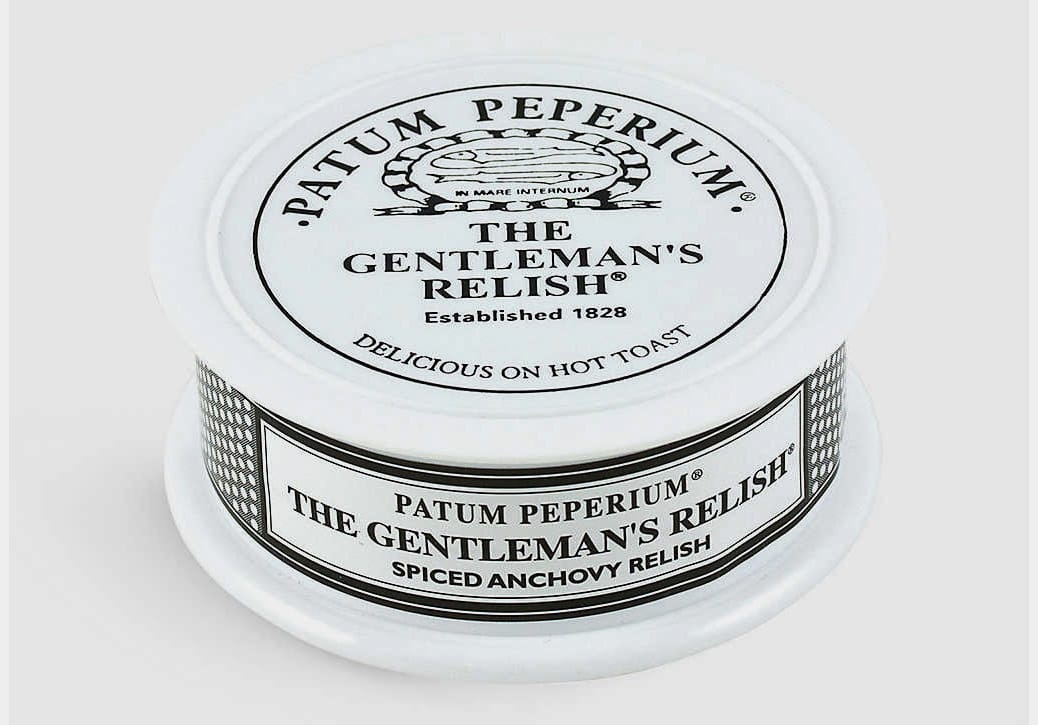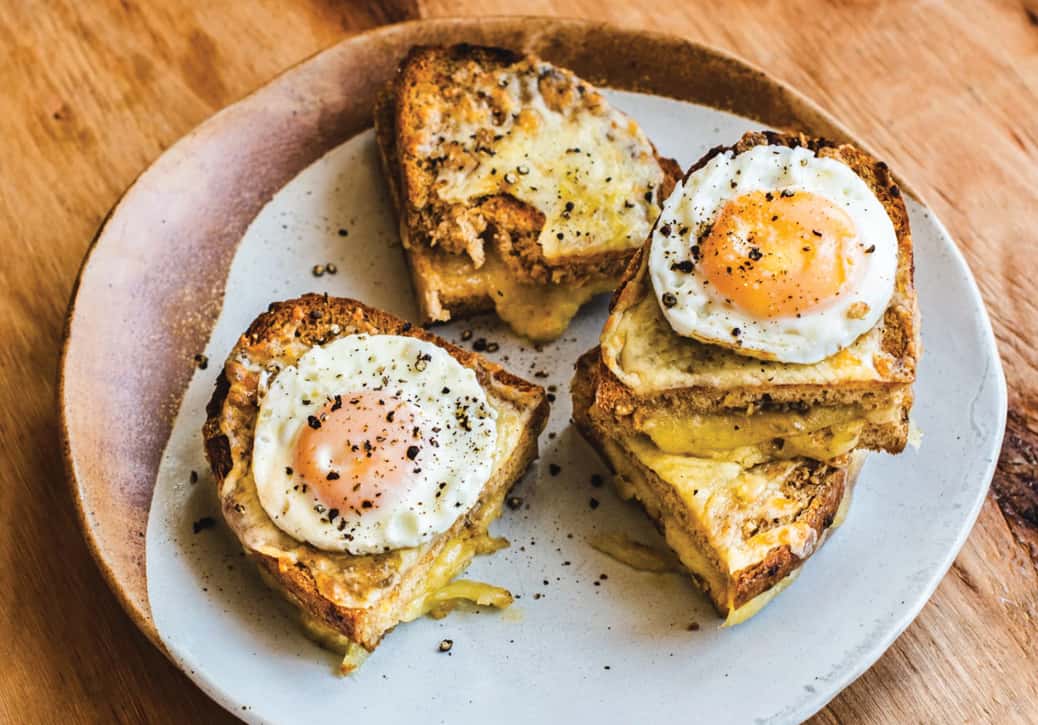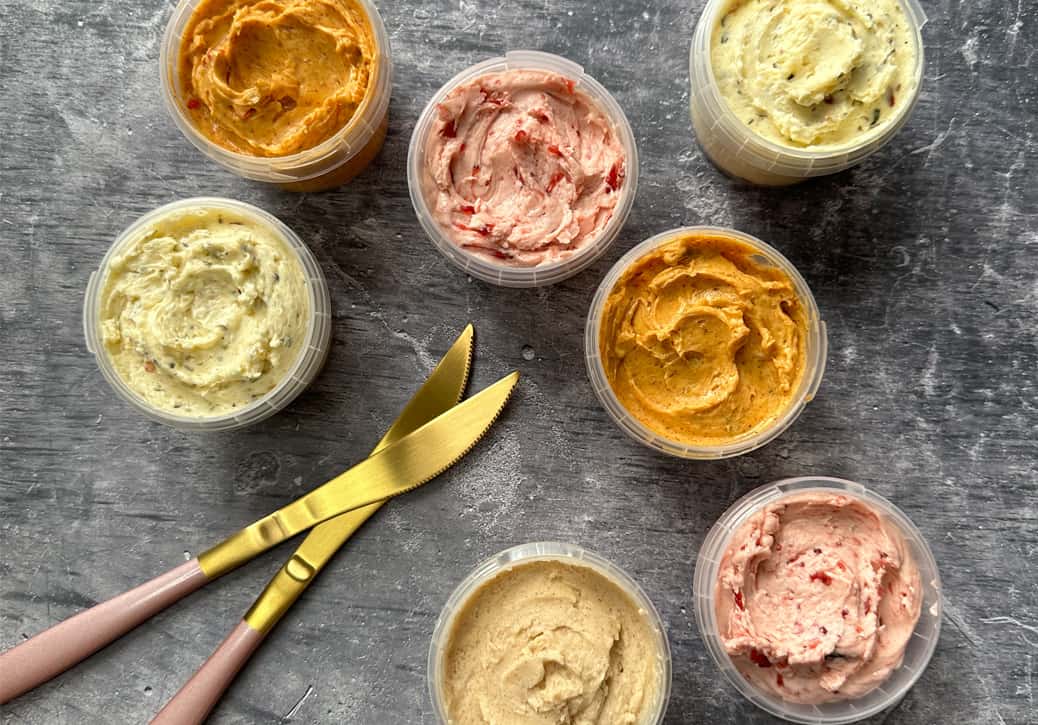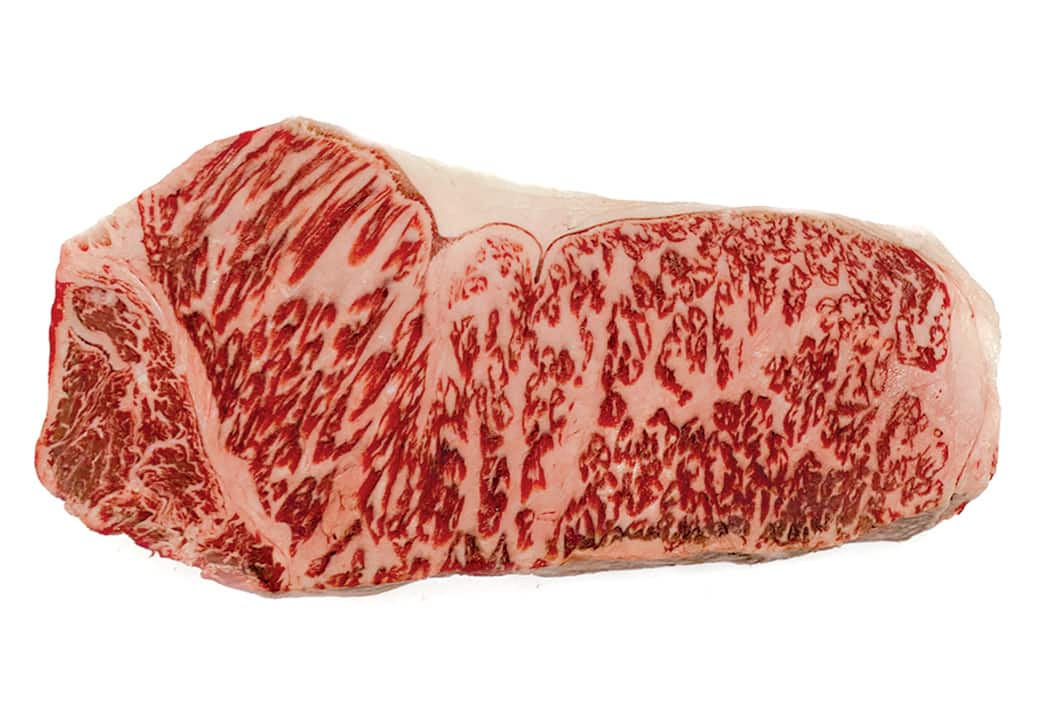Tuscan Sourdough Bread
Bread is just flour, water, yeast, and salt, aptly named artisan baker Jim Cook tells me as I sit down with him at the Picnic Café at the Brickworks one sunny fall day. Which is like saying a Van Gogh is just paint and canvas.
Jim Cook’s Tuscan sourdough is art meets science: one of the finest loaves I have ever tasted.
Jim will happily wax on about his sourdough starter, lactobacilli, natural yeast, the right flour, gliadins and glutenins. In the end he adds enigmatically, its simply the application of time and temperature.

He hand kneads the bread, of course, bakes in small batches and watches over his oven until what emerges is his perfect loaf. And it is perfect.
The crust has a wonderful crunch and beneath it’s airy, lightly chewy and slightly acidic. The subtle flavours seem to play in the mouth. In an idle moment I wonder if one could be addicted to bread. One slice is not enough. I crave more.
Still skeptical about his nonchalant simplistic explanation for perfect bread I press him. What distinguishes good bread from excellent bread, I ask?
Somewhat evasively he tells me that this is how bread was made for millennia and simple pure ingredients, naturally baked make it digestible even for individuals who are sensitive to gluten. I push harder. He disappears and emerges with a loaf he has been experimenting with. He used different flour and crucially less salt. This is bread many bakers and their customers would be happy with. But side by side it just does not measure up. There’s something missing.
Currently Jim makes Tuscan bread for Pusateri’s and its sold at the Brickworks. He’s working on a part baked Tuscan loaf sold refrigerated that can be finished baked at home. You won’t be able to tell the difference between his bread right out of the oven and one finished at home. He gives me one to try. Amazingly he’s right.
Patum Peperium – the Gentleman’s Relish
Browsing the over-the-top food hall at London’s iconic Fortnum and Mason last fall, I come across a curious white pot whose design probably hasn’t changed much since it first hit the shelves in Paris in 1828.
The product, made by Englishman John Osborne, (today’s labelling laws likely wouldn’t allow it) is called Patum Peperium (roughly, peppered paste) rather than alluding to its main ingredient anchovies—along with butter, herbs and spices.
There’s something curious about the English and anchovy. Not long after Patum came Worcestershire Sauce which is also still going strong. Celebrity chef and author Nigella Lawson went so far as to say Patum is one of her ten essential cultural treasures.

One can only imagine the dissolute scene at a London gentlemen’s club where club servants administer Patum Peperiam on buttered toast to revive members jaded palates and spur them on to greater excesses. In the 1861 edition of her ground-breaking book Household Management Mrs. Beeton wrote of it as “an excellent bonne bouche which enables gentlemen at wine-parties to enjoy port with redoubled gusto.”
John Osborne’s market as the name suggests was gentlemen. As one writer put it, Patum Peperiam “was too robust for the fairer sex and too refined for the common populace.” The upper-class aura was perpetuated in Ian Flemming’s novel For Your Eyes Only where the wife of MI6 Colonel Havelock nibbles on Patum Peperam sandwiches with her tea.

Assuming you are not resuscitating soused club members or entertaining spies Patum has a remarkable range of uses.
Thinly spread on buttered toast it makes an easy and distinct snack guaranteed to wake up even the most moribund of taste buds. Topped on scrambled eggs it adds a lovely umami zing to the creamy eggs. It easily replaces anchovies in Caesar salad dressing. This is definitely one of those best kept little kitchen secrets.
I was unable to find a local Toronto retailer of this delicacy but, surprisingly it’s available through Amazon.
Whipdd Compound Butters
In my fever dreams, woke has taken over gastronomy. Flavours are bland. Fat is bad. Products eagerly promote a longer list of things they don’t contain instead of the things they do. Celebrities not chefs and fads not taste buds drive what we eat.
Whippd thankfully didn’t share my fever dream. Upon trying their Herb & Garlic compound butter, I almost wept with joy. This is unashamedly, unapologetic an in-your-face savoury flavour.

A look at the ingredients tells me why. Butter leads with a smooth unctuous richness followed by garlic, in all its assertive glory. To add complexity and spiciness there’s a lovely blend of Oregano, Red Chilli Flakes, Thyme, Rosemary, Parsley, Black Pepper and Salt.
The versatility is amazing. I have added it to roast vegetables, grilled meats, pasta and of course the traditional garlic bread. It’s perfect on a still warm baguette.
A couple of tablespoons of Whipdd with some large prawns in the skillet and you could be in a Mediterranean seafront restaurant.
Whippd has its genesis in Akshay Kalekari’s kitchen: pasta with an accompaniment of home-made garlic bread. Friends begged for the recipe or better still asked take home samples. Which is hardly surprising as store bought garlic bread is so anaemic Vampires would order it for the table. At some point a light bulb went off and Whippd was born.
Akshay inspired by initial success has not stopped at Herb and Garlic. Real Strawberry captures in fresh strawberry compote and strawberry puree that fleeting season. Smoked Chilli will appeal to those looking for a touch of fire and heat. Honey & Cinnamon blends honey sweetness with warmly spiciness of cinnamon. Whipdd is here to spread happiness, one scrumptious bite at a time.
If I had one complaint…the 85-gram tubs are too small. This is butter that demands to be slathered liberally.
www.whipdd.com • info@whipped.com
Olive Fed Wagyu Beef
Toward the end of the barbeque season, I discovered some of the most unusual and flavourful steak this side of Japan. Deliso at the St. Lawrence Market snagged the exclusive Canadian distribution of Texas raised beef of pure Japanese lineage. Not what is often sold in Canada as Wagyu, the cross between the Japanese Black, Japanese Brown, Japanese Poll, and Japanese Shorthorn and Angus. This is even more exclusive. These fine beasts have been fed on the olives that are left over after they’ve been pressed for oil.

Their Olive Fed Wagyu has generous marbling to the point that I was concerned that injudicious grilling would see all that flavourful fat melt away. I should not have worried. My careful reverse sear barbequing technique resulted in a joyously tender steak with a unique subtle sweetness. This is steak that could ruin your appreciation of lesser steak. Be warned!
Unfortunately, Olive Fed Wagyu is stocked on a seasonal basis. I can’t wait until warmer weather ushers in that urge that strikes Canadian males to grab their tongs and emerge from their man caves. Deliso also sells the billionaire priced Japanese Wagyu beef from Japanese Black cattle punctiliously graded by assessors and whose genealogy actually comes with the steak. This is meat with such extraordinary marbling it looks more white than red.
Also worth a note, Deliso’s seasonal Wagyu burgers. Double the price of their regular burgers these are brilliant affordable luxuries. Made from the offcuts from their prime Wagyu beef these distinguish themselves from the crowd.













